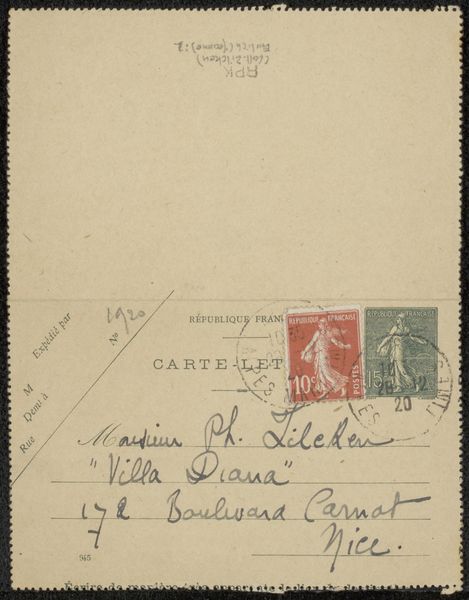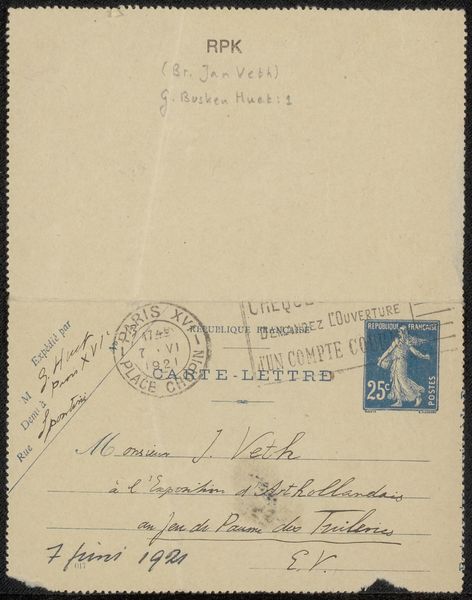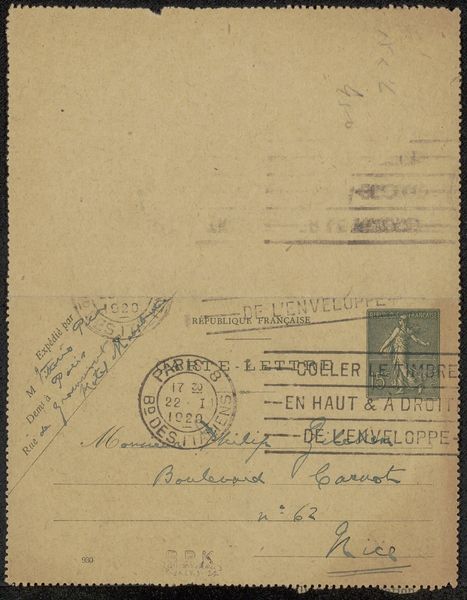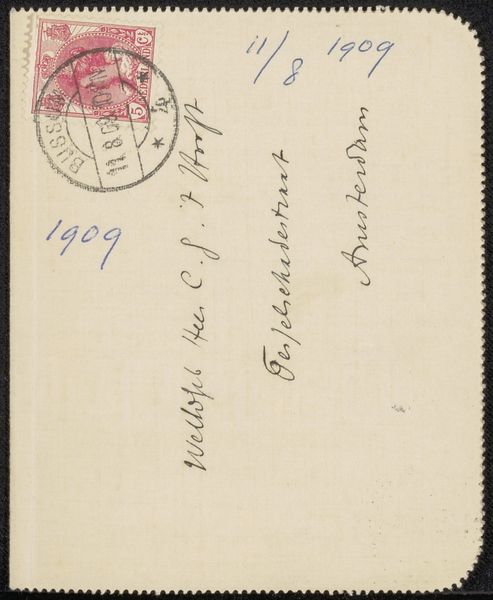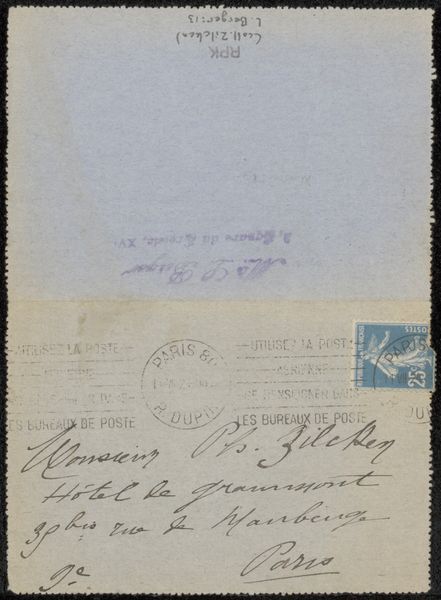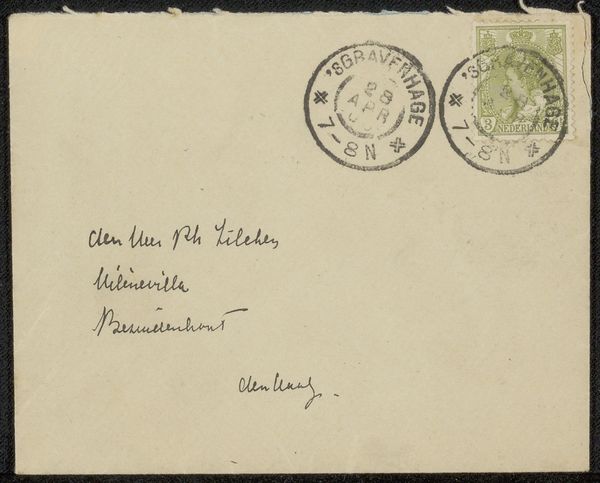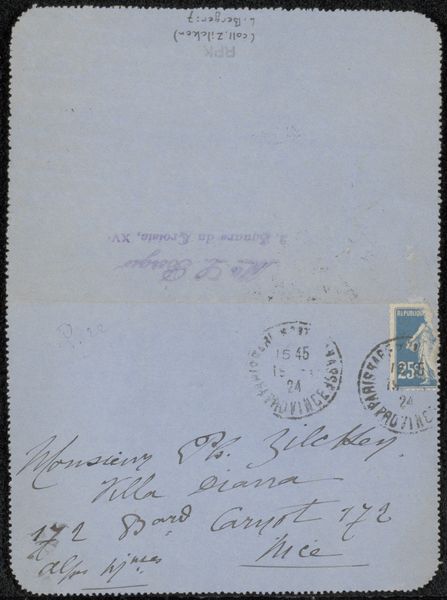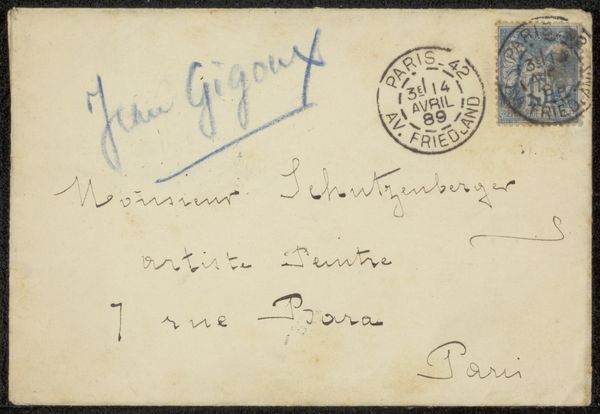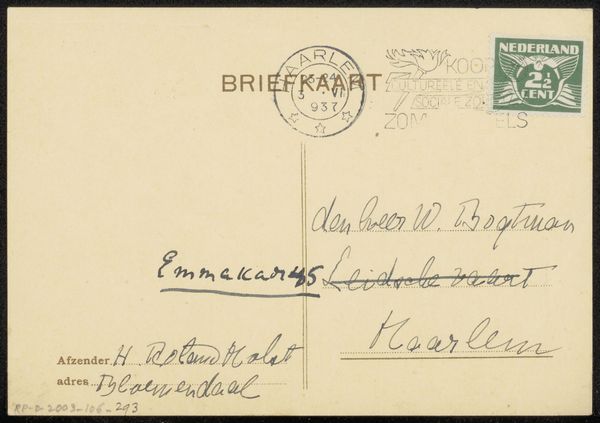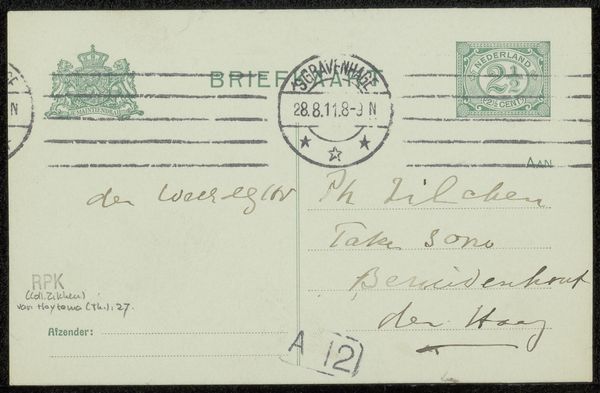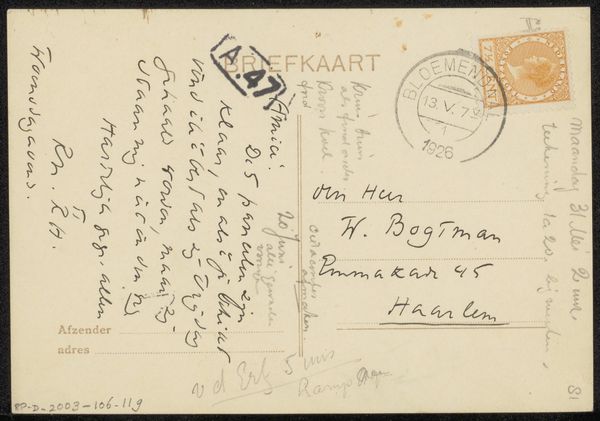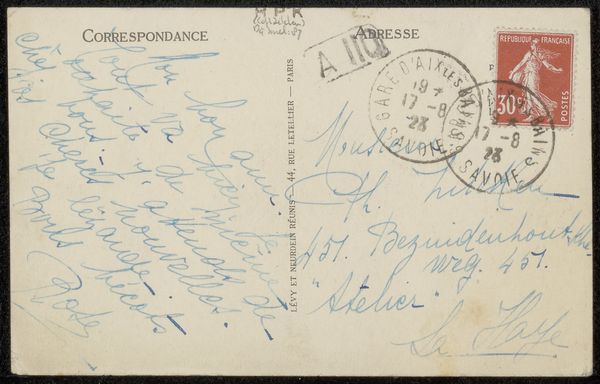
paper, ink, pen
#
aged paper
#
toned paper
#
sketch book
#
paper
#
personal sketchbook
#
ink
#
ink colored
#
pen work
#
sketchbook drawing
#
pen
#
watercolour illustration
#
sketchbook art
#
watercolor
Copyright: Rijks Museum: Open Domain
Editor: So, here we have "Briefkaart aan Philip Zilcken," which translates to "Postcard to Philip Zilcken." It's from around 1923-1925 and is a mixed media piece, using pen, ink, and watercolor on paper. Looking at it, I’m struck by its intimacy – it feels very personal and immediate, almost like a peek into a private moment. What stands out to you when you look at it? Curator: I'm immediately drawn to the layering of communication happening here. It’s not just a visual artwork; it's a fragment of social exchange, carrying with it the traces of personal histories and a specific cultural moment in time. The handwriting itself becomes a form of expression. Who was Philip Zilcken, and what was the relationship between him and the artist, Jeanne Erlich? I’m curious how the politics of the time may have impacted their interactions. Did they share political views? Editor: That’s interesting. I hadn’t thought about the social implications. I was just focusing on the visual aspects of the aged paper and the faded ink. Curator: But even the aged paper speaks to a certain history. Consider the rise of postcards as a mass medium in the early 20th century. What did it mean to send a handwritten note versus making a telephone call during that time? It gives an insight into a slower pace of life. The postal stamps also provide insight into postal systems, and the role of government within interpersonal relations. Do you see the stamps? Editor: Yes, I see them. What do you think Jeanne Ehrlich might hope for when sending this card to Philip? Curator: Maybe a renewed connection, perhaps a shared memory. Looking deeper, how might we see this act of correspondence as a form of resistance against the impersonal forces of modernity, a quiet assertion of individual connection in a rapidly changing world? Or even just friendly banter, you know! Editor: Wow, I never thought of it that way. Seeing it as a form of connection in the face of impersonal forces gives it a completely different weight. Thanks, that was very helpful! Curator: My pleasure! It's always about seeing art as connected to the wider world.
Comments
No comments
Be the first to comment and join the conversation on the ultimate creative platform.
